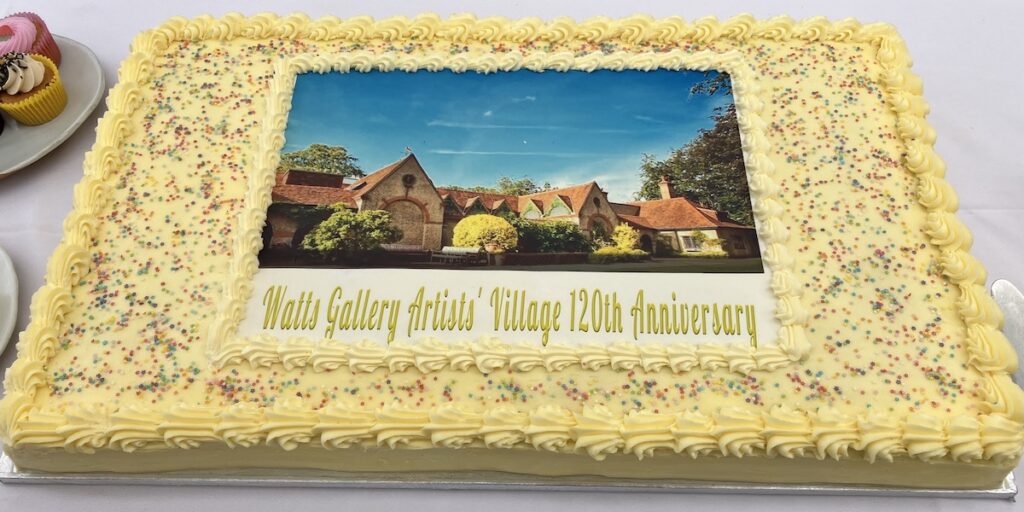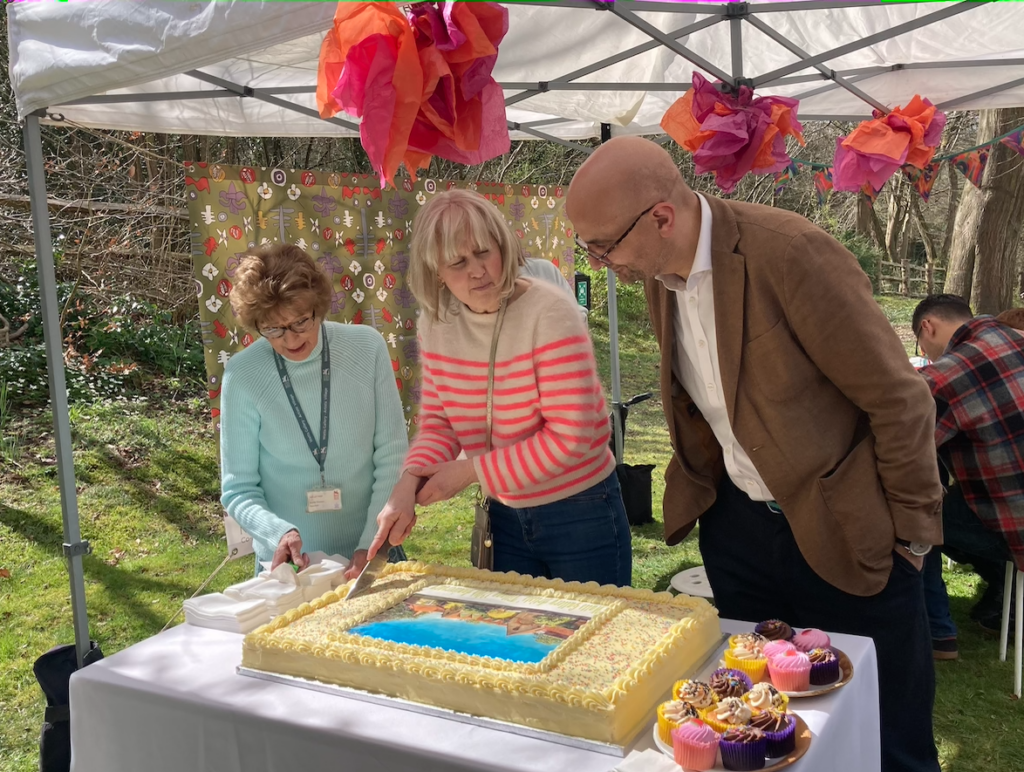 Abraham Lincoln
If given the truth, the people can be depended upon to meet any national crisis...
Abraham Lincoln
If given the truth, the people can be depended upon to meet any national crisis...
 Guildford news...
for Guildford people, brought to you by Guildford reporters - Guildford's own news service
Guildford news...
for Guildford people, brought to you by Guildford reporters - Guildford's own news service
Watts Gallery Celebrates 120 Years
Published on: 7 Apr, 2024
Updated on: 9 Apr, 2024
Watts Gallery in Compton celebrated its 120th “birthday” this week.
350 people attended a birthday party held outside the gallery on Monday (April 1), where they were entertained by a jazz band and provided with champagne and cakes.
Visitors could see an exhibition of photos showing the gallery over the years including photographs taken before and after the major refurbishment and restoration carried out between 2008 and 2011, when it was visited by then Prince Charles and his wife Camilla, Duchess of Cornwall.
Watts Gallery first opened to the public on April 1, 1904. It was the embodiment of the Art for All vision of a remarkable partnership – the artists and social pioneers, George Frederic and Mary Watts. Each year it attracts 40,000 visitors.
George Watts OM RA (1817-1904) was one the foremost artists of the nineteenth century.
He was the first living artist to have a solo exhibition at New York’s famous Metropolitan Museum of Art. More than 1.2 million people came to pay homage to this world-famous sculptor and painter.
Appreciated by famous names as diverse as E M Forster and former US President Barack Obama, 120 years after his death his works can be seen in all the major art galleries in Europe and there is a room dedicated to his work National Portrait Gallery.
Mary Watts (1849-1938) was one of the first women to train at the Slade School of Art and an exceptional and influential artist in her own right. Described as a “collaborator of genius” and best known for her innovative pottery designs which sold through Liberty, she led the local villagers in the creation of the astonishing Watts Chapel and founded the Compton Potters’ Arts Guild.

The saxophonist takes a breather as the rest of the jazz trio entertains the partygoers. Photo Fiona Giles
George and Mary’s arrival in Compton transformed the lives of the people living in Compton, and the village gained recognition as a leading creative community.
Watts Gallery perfectly encapsulates George and Mary’s vision. They saw art as a solution to address many of society’s ills – unemployment, homelessness, the fight for women’s rights and cruelty to
animals.
The gallery had a dual purpose: to house George’s paintings and to provide a home for apprentice potters. George’s paintings captured an extraordinary age of extremes and confronted uncomfortable truths that polite Victorian society did not discuss. He aimed to bring art to all rather than just the rich, and to help with the big questions of being alive in difficult times.
After George and Mary died, and as the twentieth century progressed, Modernism sought to distance itself from “Victoriana”. Watts Gallery fell into an awful state of disrepair and the Watts legacy was at risk of being lost.
But the twenty-first century saw a great revival. Through a herculean effort and extraordinarily generous support, Watts Gallery was saved with a commitment to safeguard its future for the next hundred years.
Recent Articles
- Guildford Institute’s Crowdfunding Project for Accessible Toilet in its New Community and Wellbeing Centre
- Letter: Guildford – Another Opportunity Missed?
- Letter: GBC’s Corporate Strategy – Where Is the Ambition?
- My Memories of John Mayall at a Ground-breaking Gig in Guildford Nearly Six Decades Ago
- Westborough HMO Plans ‘Losing the Heart of the Street’ Says Resident
- College Invests to Boost Surrey’s Economy and Close Digital Skills Gap
- Community Lottery Brings Big Wins for Local Charities
- GBC Housing Plan Promises ‘A Vibrant Urban Neighbourhood’ Near Town Centre
- Hospital Pillows ‘Shortage’ at the Royal Surrey
- Updated: Caravans Set Up Camp at Ash Manor School


Search in Site
Media Gallery
Dragon Interview: Local Artist Leaves Her Mark At One of England’s Most Historic Buildings
January 21, 2023 / No Comment / Read MoreDragon Interview: Lib Dem Planning Chair: ‘Current Policy Doesn’t Work for Local People’
January 19, 2023 / No Comment / Read MoreA3 Tunnel in Guildford ‘Necessary’ for New Homes, Says Guildford’s MP
January 10, 2023 / No Comment / Read More‘Madness’ for London Road Scheme to Go Ahead Against ‘Huge Opposition’, Says SCC Leader
January 6, 2023 / No Comment / Read MoreCouncillor’s Son Starts Campaign for More Consultation on North Street Plan
December 30, 2022 / No Comment / Read MoreCounty Council Climbs Down Over London Road Works – Further ‘Engagement’ Period Announced
December 14, 2022 / No Comment / Read MoreDragon Interview: GBC Reaction to the Government’s Expected Decision to Relax Housing Targets
December 7, 2022 / No Comment / Read MoreHow Can Our Town Centre Businesses Recover? Watch the Shop Front Debate
May 18, 2020 / No Comment / Read More












Recent Comments